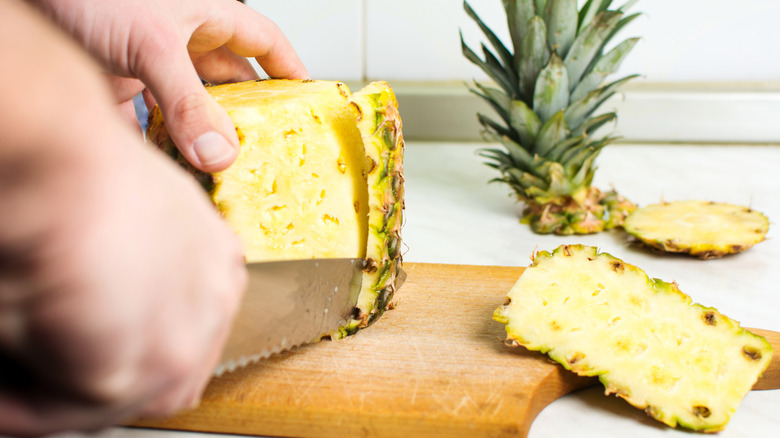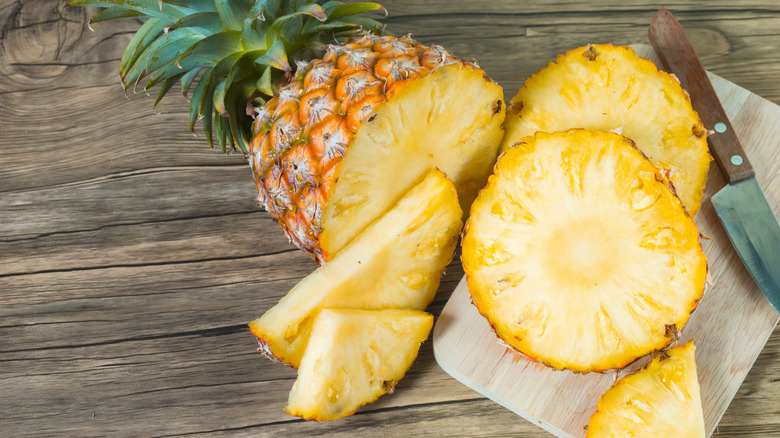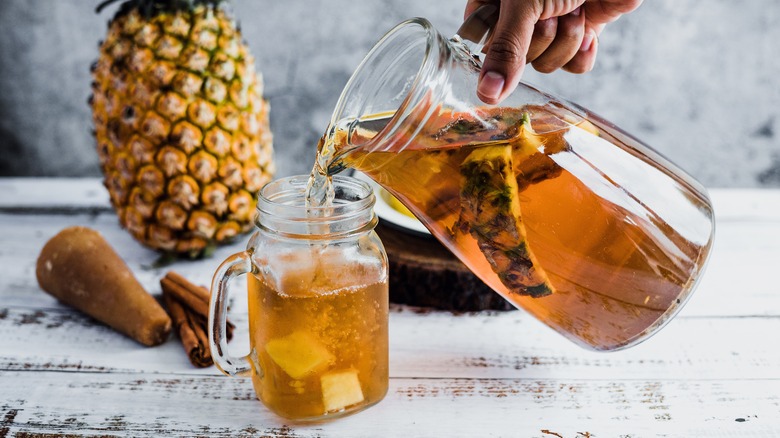Save Pineapple Peel Scraps For A One-Step Immune-Boosting Tea
There's no denying that it's easy to be a bit wasteful when it comes to preparing food. From onion peels to avocado pits to tomato seeds, a lot of our cooking scraps end up in the trash. And rightfully so — unless you plan on growing your own avocado or making a fresh bloody mary, there's not much you can do with that pit or pulp. You can, however, save some veggie scraps like that onion peel for stock, or do your own composting.
While the outside of a pineapple appears a little gnarly, it turns out the skin is actually pretty special and chock-full of potential. Next time you slice up one of the tropical crowns, save those scraps for making a healthy, immune-boosting tea. You can even collect them and keep a bag in the freezer until you're ready to get brewing. So what's so great about the skin and how do you make this tea?
The health benefits of pineapple
The purported benefits of pineapple are myriad and have been known for centuries across the globe from Germany to South and Central America, where the fruit has long been used to combat indigestion, according to Mount Sinai. They're also the reason for that tender sting you experience when your tongue enjoys a slice of pineapple.
Both the pineapple flesh and its skin contain bromelain. Bromelain is an enzyme that aids in the digestion of protein. It's known to also reduce inflammation in the body and support the immune system. WebMD notes that bromelain helps the body produce substances that combat swelling and lower pain. A study published in "Metabolism Open" in 2020 found bromelain to be responsible for blocking the entry of viruses into cells.
In addition to the ever-beneficial bromelain, the peel of pineapple is full of vitamins and minerals, antioxidants, and fiber. Consuming tea made from it may help remove toxins from the body and fight inflammation while offering up flavonoids and phenolic acids that help fight off bacteria and infections. It's also rich in manganese, beta-carotene, vitamin C, vitamin A, phosphorus, calcium, and potassium.
How to make pineapple peel tea
Making the immune-boosting pineapple peel tea could not be easier, but make sure you wash the outside of the pineapple well before collecting the peel. It really is one step and as simple as saving the scraps and adding them to a pot of water. The peel from an average-size pineapple will need about one liter of water in a stockpot, but eyeballing enough water to completely submerge the peels should be sufficient. Bring the water and peel to a boil and then let it simmer away for about 15 minutes. All the vitamins, minerals, and healthful compounds in the skin will seep into the water infusing it with flavor, a golden hue, and immune-boosting properties. Strain the liquid through a sieve and enjoy hot or cold.
The options are limitless when it comes to variations of this healing tea. Adding ginger, cinnamon, mint, honey, turmeric, cloves, lemon or any combination thereof will yield a yummy beverage. Store in the refrigerator.


